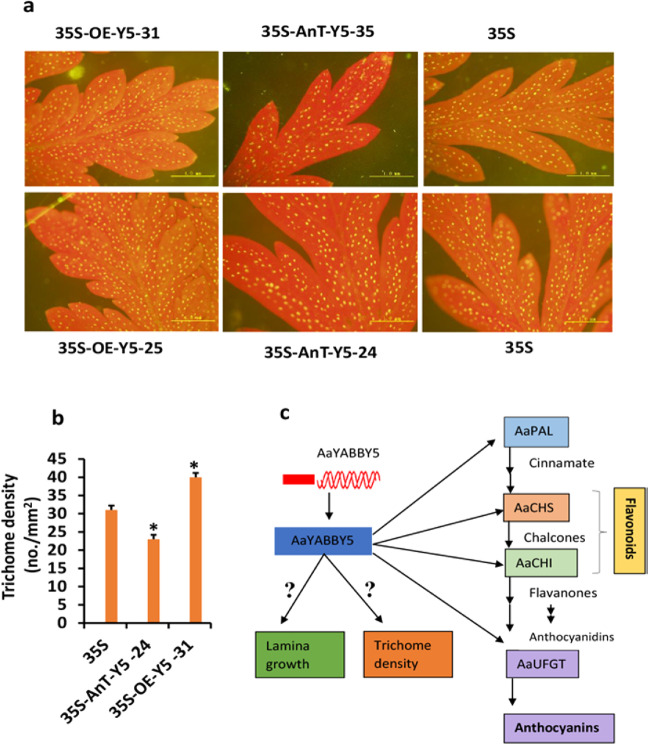Fig. 6. Measurement of glandular trichome density and working model of regulation of flavonoid biosynthesis by AaYABBY5.
a Trichome densities on the leaf surface of transformed and control plants were calculated, and images were captured using fluorescence microscopy (Olympus, Japan). The trichome densities of AaYABBY5-OE plants were higher than those of the control and AaYABBY5 AnT plants. Scale bars represent 200 µm. b Graphical representation of trichome densities of control, AaYABBY5 AnT., and AaYABBY5-OE plants calculated as numbers per millimeter square (no./mm2). Data = mean values ± standard deviation for n = 4. Error bars represent standard deviation for n = 4. Student’s t test with paired and two-tailed distribution methods. * represents P < 0.05. c The AaYABBY5 protein directly targets the promoters of PAL, lying upstream of the flavonoid biosynthetic pathway. The PAL gene, once activated, provides increased metabolic flux toward the first committed step of flavonoid biosynthesis. AaYABBY5 also directly binds to and activates the CHS and CHI promoters, providing increasing concentrations of flavonones (total flavonoid content). Going through multistep reactions, in the final step, anthocyanidins, which are the precursors of anthocyanins, are converted into anthocyanins by AaYABBY5 through the direct activation of the AaUFGT promoter. AaYABBY5 also regulates trichome number and leaf lamina growth through an unknown mechanism

